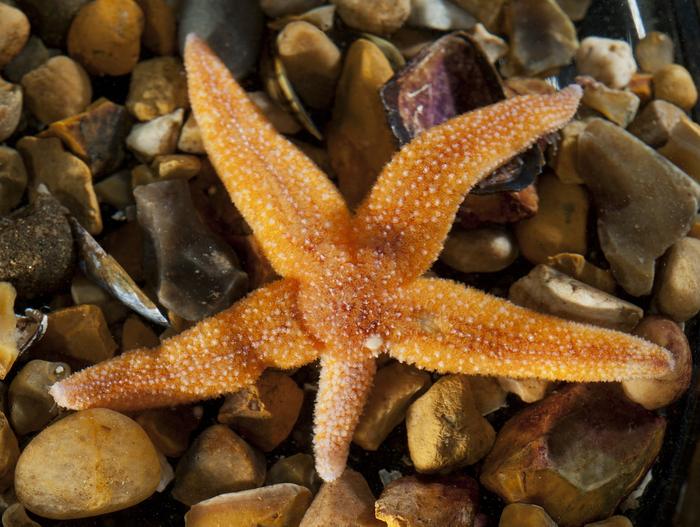Researchers at Queen Mary University of London have made a groundbreaking discovery about how starfish manage to survive predatory attacks by shedding their own limbs. The team has identified a neurohormone responsible for triggering this remarkable feat of self-preservation.

Credit: Professor Maurice Elphick / Queen Mary University of London
Researchers at Queen Mary University of London have made a groundbreaking discovery about how starfish manage to survive predatory attacks by shedding their own limbs. The team has identified a neurohormone responsible for triggering this remarkable feat of self-preservation.
Autotomy, the ability of an animal to detach a body part to evade predators, is a well-known survival strategy in the animal kingdom. While lizards shedding their tails are a familiar example, the mechanisms behind this process remain largely mysterious.
Now, scientists have unveiled a key piece of the puzzle. By studying the common European starfish, Asterias rubens, they identified a neurohormone akin to the human satiety hormone, cholecystokinin (CCK), as a regulator of arm detachment. Furthermore, the scientists propose that when this neurohormone is released in response to stress, such as a predator attack, it stimulates the contraction of a specialised muscle at the base of the starfish’s arm, effectively causing it to break off.
Remarkably, starfish possess incredible regenerative abilities, allowing them to grow back lost limbs over time. Understanding the precise mechanisms behind this process could hold significant implications for regenerative medicine and the development of new treatments for limb injuries.
Dr Ana Tinoco, a member of the London-based research group who is now working at the University of Cadiz in Spain, explained, “Our findings shed light on the complex interplay of neurohormones and tissues involved in starfish autotomy. While we’ve identified a key player, it’s likely that other factors contribute to this extraordinary ability.”
Professor Maurice Elphick, Professor Animal Physiology and Neuroscience at Queen Mary University of London, who led the study, emphasised its broader significance. “This research not only unveils a fascinating aspect of starfish biology but also opens doors for exploring the regenerative potential of other animals, including humans. By deciphering the secrets of starfish self-amputation, we hope to advance our understanding of tissue regeneration and develop innovative therapies for limb injuries.”
The study, published in the journal Current Biology, was funded by the BBSRC and Leverhulme Trust.
Journal
Current Biology
Article Title
Discovery of a neuropeptide that acts as an autotomy-promoting factor
Article Publication Date
29-Aug-2024



